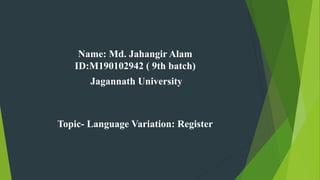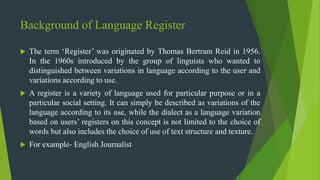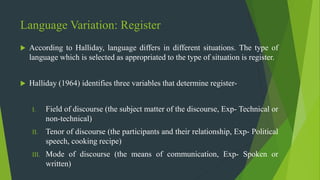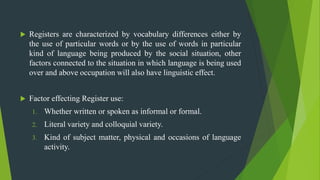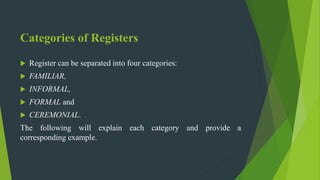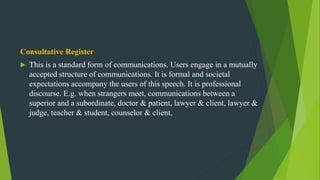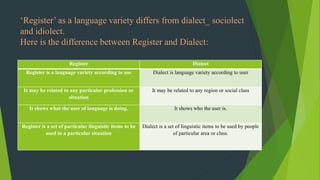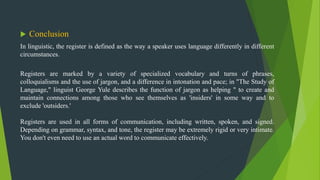The document discusses the concept of 'register' in language, defining it as a variation used for specific purposes in social contexts, influenced by factors like the field, tenor, and mode of discourse. It outlines five types of language registers: static, formal, consultative, casual, and intimate, as well as the distinction between register and dialect. Ultimately, the study emphasizes that the appropriate use of registers is crucial for effective communication in various situations.
